Last month I addressed the fact that although the liver flush tea has been one of my foundational Baseline of Health® formulas for almost 20 years, I had never put together a detailed write-up about it to clarify exactly what’s in it, why those ingredients are included, and what the formula does as a whole. Today we do the same thing for its companion product, liver flush tincture. Although these are related formulas and are both used as part of a liver detox protocol and even contain a couple of the same ingredients, they are not the same thing. They play fundamentally different roles in the detox process and are used in very different ways to improve the health of your liver, not to mention your overall natural health.
Next to the skin, the liver is the largest organ in the body. In many ways, it is the most important organ, and the last to be considered when it comes to health. In addition to being large, the liver is also a complicated organ involved in at least 200 separate functions. Generally speaking, the liver performs a vital role in regulating, synthesizing, storing, secreting, transforming, and breaking down many different substances in the body. The liver is so important to our well-being that many healers maintain that most diseases cannot develop in the body (that, in fact, no form of cell degeneration can occur) if the liver is functioning in an efficient, healthy manner. Conversely, an unhealthy liver is very likely at the root of most serious health problems. When we do a liver detox, we need to:
- Remove all the excess fat from the liver.
- Get bile flowing freely again.
- Eliminate toxic waste that our livers have filtered out.
- Dissolve and pass out the accumulated gallstones and incipient gallstones that are stored in our livers.
These things are accomplished using the liver flush tea and a morning liver drink as detailed in the liver detox protocol. But there are two other things that we must do that are not covered by the tea and the morning drink:
- Regenerate the damaged and destroyed cells of the liver.
- Eliminate any parasites that have invaded the liver.
And this is where the liver flush tincture comes into play. Whereas the liver flush tea is primarily a therapeutic cleansing and “easing” formula, the liver flush tincture is essentially a medicinal rebuilding and anti-parasitic formula designed to be used on an as needed basis. Later on we will explore exactly how the formula is used, but for now, let’s take a look at its ingredients.
Liver Flush Tincture Formula
Milk Thistle Seed
Milk thistle, aka St. Mary’s thistle, is probably the world’s best known liver herb. Its two key compounds are silymarin and silibinin (aka silybin). Dozens of studies have shown that both silymarin and silibinin can prevent or counteract damage to the liver caused by toxins such as alcohol, acetaminophen (Tylenol), and other drugs, as well as environmental (heavy metals) and bacterial toxins, and even poison mushrooms. Silymarin combats lipid peroxidation in the liver of rats and has been shown to hasten the restoration of liver cells in damaged liver tissue. Sometimes the mechanism of liver damage is the depletion of glutathione (often from heavy consumption of alcohol). In studies, silymarin and silibinin actually elevated glutathione levels in rats given alcohol. Human subjects with liver damage caused by chronic alcoholism, cirrhosis, hepatitis, or other toxicities were likewise significantly benefited by treatment with silymarin.
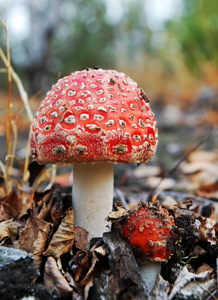 As a 2003 report in the Journal de Pharmacie de Belgique pointed out, the liver benefitting properties of milk thistle are rather difficult to evaluate objectively.1 Laekeman G, De Coster S, De Meyer K. “St. Mary’s Thistle: an overview.” J Pharm Belg. 2003;58(1):28-31. http://www.ncbi.nlm.nih.gov/pubmed/12722542 Mortality rate in the case of life-threatening liver diseases is the most objective parameter. And as it turns out, silymarin has been tested in living animals deliberately intoxicated with mushroom toxins, medicines, heavy metals, or toxic organic solvents. Preventive as well as curative activity has been confirmed. Silymarin accumulates in the liver, which is also the target organ in therapy. Silymarin even improves the prognosis after accidental ingestion of toxic death cap mushrooms. And silymarin given to patients with liver damage by alcohol lowers the death toll. Side effects are comparable to placebo.
As a 2003 report in the Journal de Pharmacie de Belgique pointed out, the liver benefitting properties of milk thistle are rather difficult to evaluate objectively.1 Laekeman G, De Coster S, De Meyer K. “St. Mary’s Thistle: an overview.” J Pharm Belg. 2003;58(1):28-31. http://www.ncbi.nlm.nih.gov/pubmed/12722542 Mortality rate in the case of life-threatening liver diseases is the most objective parameter. And as it turns out, silymarin has been tested in living animals deliberately intoxicated with mushroom toxins, medicines, heavy metals, or toxic organic solvents. Preventive as well as curative activity has been confirmed. Silymarin accumulates in the liver, which is also the target organ in therapy. Silymarin even improves the prognosis after accidental ingestion of toxic death cap mushrooms. And silymarin given to patients with liver damage by alcohol lowers the death toll. Side effects are comparable to placebo.
Studies have shown that silibinin can block hepatitis C virus (HCV) infection and inhibit T cell proliferation. Even more impressive, a 2012 study has shown that intravenous silibinin inhibits replication of HIV-1.2 McClure J, Lovelace ES, Elahi S, Maurice NJ, et al. “Silibinin inhibits HIV-1 infection by reducing cellular activation and proliferation.”PLoS One. 2012;7(7):e41832. http://www.ncbi.nlm.nih.gov/pmc/articles/PMC3404953/ As the study concluded, silymarin-derived compounds provide cytoprotection by suppressing virus infection, immune activation, and inflammation, and as such may be relevant for both HIV mono-infected and HIV/HCV co-infected subjects.
Studies have also shown that milk thistle is effective in lowering both blood glucose levels and LDL cholesterol. One double-blind, placebo-controlled clinical trial found that milk thistle supplementation was able to help bring glucose levels back into the normal range, and the patients taking milk thistle had lower levels of LDL, triglycerides, and total cholesterol levels over the four-month trial period.3 Huseini HF, Larijani B, Heshmat R, Fakhrzadeh H, et al. “The efficacy of Silybum marianum (L.) Gaertn. (silymarin) in the treatment of type II diabetes: a randomized, double-blind, placebo-controlled, clinical trial.” Phytother Res. 2006 Dec;20(12):1036-9. http://www.ncbi.nlm.nih.gov/pubmed/17072885
And milk thistle is quite safe as a supplement. Neither toxicity nor drug interactions have been reported following high doses of milk thistle or its components. The bottom line is that milk thistle has hepatoprotective properties and is safe enough to be used even in cases of chronic liver disease. It is valuable in post-operative liver repair and in the treatment of alcoholic cirrhosis, and, as a bonus, it is cancer protective.
But it is only the second most important herb in this formula.
Picrorhiza Kurrooa Root & Rhizomes Extract
Although less well known than milk thistle, I believe that Picrorhiza kurrooa, also known as Kutki, is the single most important liver herb in the alternative practitioner’s arsenal. There are certainly some studies to support the contention, but mostly it is based on my over 45 years of observations in alternative health. When I first started using it in liver formulas in the early 90’s, it was almost unknown outside of India. Now it has become popular enough to make its way onto the endangered species list–with one important exception. The exception is that it carries an Appendix II listing. That means that although the fresh herb is illegal to import and export, it is perfectly legal to import and export processed extracts of the herb. With that in mind, I use a processed Picrorhiza extract like the picroliv listed in the studies below in my liver tincture formulation.
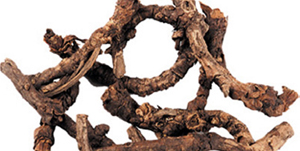 The root contains a number of very bitter glucosides including kutkin, the primary active ingredient. Kutkin itself is comprised of kutkoside and iridoid glycoside picroside I, II and II. Other identified active components include picrorhizin, nine cucurbitacin glycosides, D-mannitol, benetic acid, kutkisterol, vanillic acid, steroids, and apocynin. Apocynin is a catechol that has been shown to inhibit neutrophil oxidative burst (good for the overall integrity of the immune system) in addition to being a powerful anti-inflammatory agent and reducer of platelet aggregation,4 Simons JM, Hart BA, Ip Vai Ching TR, Van Dijk H, Labadie RP. “Metabolic activation of natural phenols into selective oxidative burst agonists by activated human neutrophils.” Free Radic Biol Med 1990;8:251-258. http://www.ncbi.nlm.nih.gov/pubmed/2160411 while the cucurbitacins have been shown to be highly cytotoxic to cancer cells and possess antitumor effects.5 Stuppner H, Wagner H. “New cucurbitacin glycosides from Picrorhiza kurroa.” Planta Medica 1989;55:559. http://www.ncbi.nlm.nih.gov/pubmed/2616673
The root contains a number of very bitter glucosides including kutkin, the primary active ingredient. Kutkin itself is comprised of kutkoside and iridoid glycoside picroside I, II and II. Other identified active components include picrorhizin, nine cucurbitacin glycosides, D-mannitol, benetic acid, kutkisterol, vanillic acid, steroids, and apocynin. Apocynin is a catechol that has been shown to inhibit neutrophil oxidative burst (good for the overall integrity of the immune system) in addition to being a powerful anti-inflammatory agent and reducer of platelet aggregation,4 Simons JM, Hart BA, Ip Vai Ching TR, Van Dijk H, Labadie RP. “Metabolic activation of natural phenols into selective oxidative burst agonists by activated human neutrophils.” Free Radic Biol Med 1990;8:251-258. http://www.ncbi.nlm.nih.gov/pubmed/2160411 while the cucurbitacins have been shown to be highly cytotoxic to cancer cells and possess antitumor effects.5 Stuppner H, Wagner H. “New cucurbitacin glycosides from Picrorhiza kurroa.” Planta Medica 1989;55:559. http://www.ncbi.nlm.nih.gov/pubmed/2616673
Traditionally, Kutki is a well-known herb in both Indian Ayurvedic medicine and traditional Chinese medicine. It has been used to treat disorders of the liver and upper respiratory tract (including bronchial asthma), reduce fevers, and to treat dyspepsia, chronic diarrhea, and scorpion stings and snake bites. But primarily, it is known as a liver herb that not only protects and heals the liver, but also prevents liver toxicity, neutralizes harmful biochemical changes in the liver caused by many toxic agents, and even improves the flow of bile. Let’s look at some of these benefits in a little more detail.
Liver Protection
Numerous animal studies have demonstrated that the active biochemicals of Picrorhiza kurrooa are effective at preventing liver toxicity–in fact, showed significant curative activity–vis-à-vis numerous toxic agents such as galactosamine, thiocetamide, and carbon tetrachloride.6 Visen PK, Saraswat B, Dhawan BN. “Curative effect of picroliv on primary cultured rat hepatocytes against different hepatotoxins: an in vitro study.” J Pharmacol Toxicol Methods 1998;40:173-179. http://www.ncbi.nlm.nih.gov/pubmed/10334634 When administered, the toxic agents produced a 40-62% inhibition of cell viability. On removal of the toxic agents and the addition of the Picrorhiza extract, a concentration dependent reversal of these negative effects was seen in as little as 48 hours. A similar effect was seen when oral Picrorhiza extract was administered to rats poisoned by aflatoxin B1 exposure. Picrorhiza kurrooa “significantly prevented the biochemical changes induced by aflatoxin B1.”7 Rastogi R, Srivastava AK, Rastogi AK. “Biochemical changes induced in liver and serum aflatoxin B1-treated male wistar rats: preventive effect of picroliv.” Pharmacol Toxicol 2001;88:53-58. http://www.ncbi.nlm.nih.gov/pubmed/11169162
Cell death following ischemia-reperfusion injury is a major concern in clinical issues such as organ transplantation and trauma when blood supply to an organ is severely reduced. In a study to determine Picrorhiza’s potential for preventing such damage, rats were fed an extract for seven days prior to the inducement of hepatic ischemia (i.e., the blood supply to their livers was stopped for a controlled period of time), demonstrated improved hepatocyte glycogen preservation and reduced cell death compared to control animals.8 Singh AK, Mani H, Seth P. “Picroliv preconditioning protects the rat liver against ischemia-reperfusion injury.” Eur J Pharmacol 2000;395:229-239. http://www.ncbi.nlm.nih.gov/pubmed/10812054 Picrorhiza extracts have also shown to be effective in treating poisoning by the highly toxic death cap mushroom, Amanita phalloides.9 Dwivedi Y, Rastogi R, Garg NK, et al. “Effects of picroliv, the active principle of Picrorhiza kurroa, on biochemical changes in rat liver poisoned by Amanita phalloides.” Zhongguo Yao Li Xue Bao 1992;13:197-200. http://www.chinaphar.com/1671-4083/13/197.pdf Picrorhiza provided significant restorations of all the biochemical changes poisoned/compromised by A phalloides except cytochrome P-450 and glycogen.
Now, while it is true that most of us are not too worried by things like hepatitis, cirrhosis, or ingesting carbon tetrachloride, we still subject our livers to constant stressors that ultimately damage and destroy liver cells—and, remember, that damage is cumulative over time. We’re talking about things like:
- Too much protein in the diet. Protein metabolism is especially taxing on the liver since it is the liver which must metabolize complex proteins into simple compounds. The greater the consumption of protein, the greater the stress on the liver.
- Too many simple carbohydrates in the diet. The body converts excess simple carbohydrates into triglycerides, which are then stored in the liver as fat. The more fat stored in the liver, the harder it is for the liver to perform its full range of normal functions.
- Overeating. Too much enzyme-deficient food stresses the liver.
- Drug residues. Virtually all of the drugs that we take (medicinal and recreational) are processed, purified, and refined in the liver—in preparation for elimination from the body.
- Vitamin isolates. Many vitamins in their isolated form are toxic to the body and must be conjugated by the liver to render them harmless and make them available to the cells. Every time you supplement with such vitamins, you stress the liver.
- Cirrhosis aside, any consumption of alcohol causes inflammation of the liver’s tissue. Once the liver is inflamed, it can no longer filter, which causes it to plug up with fat and become even more inflamed. If we consume enough alcohol, we overwhelm the liver’s ability to regenerate itself, and the net result is cirrhosis (or hardening) of the liver.
- Toxins, heavy metals, and pesticides. Everything we breathe, eat, and absorb through our skin is purified and refined in the liver.
- Lack of exercise forces the liver to do the elimination work that should be done by the lungs and the skin.
Thus, any herbs that are hepaprotective and that promote liver regeneration are an essential component of any health regimen.
Liver Regeneration
Like milk thistle, Picrorhiza has been shown to stimulate liver regeneration in rats.10 Singh V, Kapoor NK, Dhawan BN. “Effect of picroliv on protein and nucleic acid synthesis.” Indian J Exp Biol 1992;30:68-69. http://www.ncbi.nlm.nih.gov/pubmed/1506022 Specifically, studies have shown that oral administration of picroliv, a standardized fraction of roots and rhizomes of Picrorhiza kurrooa, showed stimulation of nucleic acid and protein synthesis in rat livers. Results are comparable to those seen when silymarin is administered. Even better. Picrorhiza extract was also shown to be effective in reversing alcohol-induced liver damage in rats. Treatment restored the damage in a dose-dependent manner (36-100%) over 45 days.11 Saraswat B, Visen PK, Patnaik GK, Dhawan BN. “Ex vivo and in vivo investigations of picroliv from Picrorhiza kurroa in an alcohol intoxication model in rats.” J Ethnopharmacol 1999;66:263-269. http://www.ncbi.nlm.nih.gov/pubmed/10473171 This is significant for anyone suffering from cirrhosis.
Viral Hepatitis
Studies indicate that Picrorhiza extracts appear to be of therapeutic value in treating viral hepatitis. An in vitro study investigated anti-hepatitis B-like activity of Picrorhiza and found it to have promising anti-hepatitis B surface antigen activity.12 Mehrotra R, Rawat S, Kulshreshtha DK, et al. “In vitro studies on the effect of certain natural products against hepatitis B virus.” Indian J Med Res 1990;92:133-138. http://www.ncbi.nlm.nih.gov/pubmed/2370093 In addition, in a randomized, double-blind, placebo-controlled trial of 33 patients diagnosed with acute viral hepatitis, 375 mg of Picrorhiza root powder was given three times daily for two weeks to 15 of the patients, while the remaining 18 patients acted as controls and received a placebo. Bilirubin, SGOT, and SGPT values were significantly lower in the treatment group (that’s a good thing), and the time required for bilirubin values to drop to 2.5 mg % was 27.4 days in the treatment group versus 75.9 days for the placebo group.13 Vaidya AB, Antarkar DS, Doshi JC, et al. “Picrorhiza kurroa (Kutaki) Royle ex Benth as a hepatoprotective agent–experimental and clinical studies.” J Postgrad Med 1996;42:105-108. http://www.jpgmonline.com/article.asp?issn=0022-3859;year=1996;volume=42;issue=4;spage=105;epage=8;aulast=Vaidya
Cancer
As mentioned earlier, Picrorhiza has also demonstrated cancer protective properties. When tested against human breast cancer cells and human prostate cancer cells, Picrorhiza extracts exhibited promising antioxidant potentials and were also observed to be cytotoxic at the tested dosage and were able to target the cancer cells and kill them.14 Rajkumar V, Guha G, Kumar RA. “Antioxidant and anti-neoplastic activities of Picrorhiza kurroa extracts.” Food Chem Toxicol. 2011 Feb;49(2):363-9. http://www.ncbi.nlm.nih.gov/pubmed/21081148 In yet another study, Picrorhiza extracts demonstrated chemoprotective potential against chemically-induced liver tumors15 Rajeshkumar NV, Kuttan R. “Inhibition of N-nitrosodiethylamine-induced hepatocarcinogenesis by Picroliv.” J Exp Clin Cancer Res. 2000 Dec;19(4):459-65. http://www.ncbi.nlm.nih.gov/pubmed/11277323 and induced sarcoma tumors and chemically-initiated papilloma formations.16 Rajeshkumar NV, Kuttan R. “Protective effect of Picroliv, the active constituent of Picrorhiza kurroa, against chemical carcinogenesis in mice.” Teratog Carcinog Mutagen. 2001;21(4):303-13. http://www.ncbi.nlm.nih.gov/pubmed/11406836
The bottom line is that the combination of milk thistle and Picrorhiza kurrooa extract has incredible liver protective and regenerative capabilities. In this case, the whole is greater than the sum of its parts. And again, most of us are not dealing with the extreme circumstances covered in the studies, but what those studies tell us is that milk thistle and Picrorhizza are mandatory for protecting our livers against the cumulative assaults of daily life.
Fresh Black Walnut Hulls
Black Walnut hulls have a long history in herbal medicine. Pliny the Elder, the Roman naturalist, talked about their healing power in the first century A.D. The seventeenth-century herbalist, Nicholas Culpeper, prescribed Walnut to draw poisonous venom from snakebites and spider bites. But it was the Native Americans who first used black walnut hulls as a laxative and as a vermifuge, a treatment for eliminating intestinal parasites. As a laxative, it expels parasites as part of its cleansing of the body and the high tannin and juglone content is thought to oxygenate the blood and kill the parasites. Black walnut is reported to be effective against pinworm, ringworm, tapeworm and other intestinal parasites. Juglone has been identified as a chemical that is antibacterial, antiviral, antiparasitic, and a fungicide. While there are very few scientific studies on black walnut hulls, the ones that exist are very interesting and suggestive.
Bactericidal and Virucidal Effects of Black Walnut
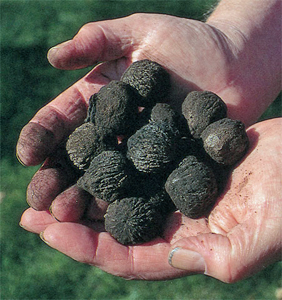
A 2012 study screened plant quinones for inhibiting effects on the bacterial fire blight pathogen. The most active compound discovered was juglone from walnuts.17 Fischer TC, Gosch C, Mirbeth B, Gselmann M, Thallmair V, Stich K. “Potent and specific bactericidal effect of juglone (5-hydroxy-1,4-naphthoquinone) on the fire blight pathogen Erwinia amylovora.” J Agric Food Chem. 2012 Dec 12;60(49):12074-81. http://www.ncbi.nlm.nih.gov/pubmed/23163769 As the study said, “juglone has a potent and specific bactericidal effect on E. amylovora…Juglone is a promising candidate for the development of a new environmentally friendly plant protectant to replace the antibiotic streptomycin currently used in fire blight control.”
A 2002 study published in Phytotherapy Research found that juglone showed significant inhibition of RNase H activity in the HIV virus.18 Min BS, Miyashiro H, Hattori M. “Inhibitory effects of quinones on RNase H activity associated with HIV-1 reverse transcriptase.” Phytother Res. 2002 Mar;16 Suppl 1:S57-62. http://www.ncbi.nlm.nih.gov/pubmed/11933141 This is a big deal. HIV-1 replicates itself through reverse transcription, a process that produces new double-stranded DNA from the viral genome’s single-stranded RNA. During DNA synthesis, a DNA/RNA hybrid is formed as a replication intermediate and must be cleaved by RNase H before the process can continue. Inhibit that, and you inhibit replication of the HIV virus. And the study showed that juglone from black walnuts did just that.
Anti-parasitic and Anti-fungal Effects
As I mentioned, there are no scientific studies that specifically support the use of black walnut to kill intestinal parasites. Any studies that have been done are merely suggestive. For example, a 2008 study identified types of wood that were resistant to the Emerald ash borer (Agrilus planipennis Fairmaire) (Coleoptera: Buprestidae), an invasive pest that eats the inner bark of trees. The study found that ash borer larvae fed and developed normally on ash logs, but that no larvae were able to survive, grow, or develop on any black walnut trees or logs.19 Anulewicz AC, McCullough DG, Cappaert DL, Poland TM. “Host range of the emerald ash borer (Agrilus planipennis Fairmaire) (Coleoptera: Buprestidae) in North America: results of multiple-choice field experiments.” Environ Entomol. 2008 Feb;37(1):230-41. http://www.ncbi.nlm.nih.gov/pubmed/18348815
In truth, this is one case where experience trumps lack of studies. Any good herbalist who has used black walnut hull tincture, either internally or externally, can tell you how effective it is. Dr. John Christopher tells a great story about how when serving in the army, he used it to cure jungle rot in just four days.20 John Christopher. “Black Walnut Tincture.” Dr. Christopher’s Herbal Legacy. (Accessed 5 May 2013.) http://www.herballegacy.com/Black_Walnut.html
It is also important to understand that many parasites do not confine themselves to our intestinal tracts. There are at least 1000 species of parasitic organisms that can live in humans including Giardia, flatworms, tapeworms, hookworms, liver flukes, ringworms, nematodes, and a whole host of funguses. Incidendtally, medical labs only check for about 50-60 of them. Some encamp in the liver, and others, such as Cryptococcus gatti, invade the lungs, nervous system, soft tissue, lymph nodes, and joints. Anti-parasitic and anti-fungal herbs such as black walnut (not to mention heavy doses of garlic) can help drive all of them out of the body.
Side Effects
Side effects associated with black walnut supplements are uncommon, and it is generally safe to use unless you are pregnant or allergic to nuts. Use while pregnant could “theoretically” cause birth defects or negatively impact the growth of the fetus or potentially cause a miscarriage. The odds of any of these things happening is extremely low, but it is recommended that you not use it while pregnant.
Chicory Root
Chicory has a long history of aiding with liver problems. In fact, the ancient Egyptians were known to consume large amounts of chicory to purify the liver and blood. Its primary benefits are that it both protects the liver21 Atta AH, Elkoly TA, Mouneir SM, Kamel G, et al. “Hepatoprotective Effect of Methanol Extracts of Zingiber officinale and Cichorium intybus.” Indian J Pharm Sci. 2010 Sep-Oct; 72(5): 564–570. http://www.ncbi.nlm.nih.gov/pmc/articles/PMC3116299/ ,22 Hassan HA, Yousef MI. Ameliorating effect of chicory (Cichorium intybus L.)-supplemented diet against nitrosamine precursors-induced liver injury and oxidative stress in male rats.” Food Chem Toxicol. 2010 Aug-Sep;48(8-9):2163-9. http://www.ncbi.nlm.nih.gov/pubmed/20478349 and increases the flow of bile.23 Kim M, Shin HK. “The water-soluble extract of chicory influences serum and liver lipid concentrations, cecal short-chain fatty acid concentrations and fecal lipid excretion in rats.” J Nutr. 1998 Oct;128(10):1731-6. http://jn.nutrition.org/content/128/10/1731.long In addition, it has strong antibacterial and antifungal activity–and it is even effective against salmonella.24 Schmidt BM, Ilic N, Poulev A, Raskin I. “Toxicological evaluation of a chicory root extract.” Food Chem Toxicol. 2007 Jul;45(7):1131-9. http://www.ncbi.nlm.nih.gov/pubmed/17306431
Dandelion Root
As I explained in the newsletter on the Liver Flush Tea, dandelion root is one of the great liver flush herbs. It is the best lipotropic known, flushing excess fat from the liver, thereby helping to relieve chronic liver congestion. In addition, it increases the production of bile, which is important both because excess cholesterol is carried out by the bile and because when bile doesn’t flow, it thickens, hardens, and eventually turns into gallstones. And studies have proven that it actually has “liver healing” properties.25 Mahesh A, Jeyachandran R, Cindrella L, Thangadurai D, et al. “Hepatocurative potential of sesquiterpene lactones of Taraxacum officinale on carbon tetrachloride induced liver toxicity in mice.” Acta Biol Hung. 2010 Jun;61(2):175-90. doi: 10.1556/ABiol.61.2010.2.6. http://www.ncbi.nlm.nih.gov/pubmed/20519172 ,26 Domitrovic R, Jakovac H, Romic Z, Rahelic D, Tadic Z. “Antifibrotic activity of Taraxacum officinale root in carbon tetrachloride-induced liver damage in mice.” J Ethnopharmacol. 2010 Aug 9;130(3):569-77. http://www.ncbi.nlm.nih.gov/pubmed/20561925
Fresh Ginger Root
One of the studies that we cited just a moment ago in support of liver’s hepatoprotective benefits vis-à-vis chicory also verified that ginger works just as well in protecting the liver.27 Atta AH, Elkoly TA, Mouneir SM, Kamel G, et al. As the study reported, extracts of ginger and chicory, given alone or mixed, significantly reversed the carbon tetrachloride-induced alterations in the biochemical and cellular constituents of blood. No toxic symptoms were reported in doses up to 5 g/kg. “The hepatoprotective effects of ginger and chicory were also confirmed by the examination of diseased liver tissue.”
And as we discussed when looking at the Liver Flush Tea, ginger also helps control temporary nausea,28 Leake I. “Nausea and vomiting: Getting to the root of the antiemetic effects of ginger. “Nat Rev Gastroenterol Hepatol. 2013 Mar 26. http://www.ncbi.nlm.nih.gov/pubmed/23528344 which makes it useful in morning sickness during pregnancy, and in fact, it was once used by sailors as an anti-seasickness tonic. More to the point, it is invaluable in liver cleansing programs since occasional nausea during a liver detox is always a slight possibility.
Oregon Grape Root
Oregon grape root (Mahonia aquifolium) is renowned among herbalists for its ability to stimulate liver function and improve the flow of bile. It has been used traditionally to treat both liver congestion and infectious conditions of both the stomach and intestines. But it also functions as an antimicrobial. One of the problems when it comes to studies on Mahonia is that the researchers in any country tend to focus on the individual species of Mahonia found in their region. For example:
One study just published in January of this year in the International Journal of Molecular Science found that Taiwanese Mahonia (Mahonia oiwakensis) had antioxidant, analgesic, anti-inflammatory, and hepatoprotective effects similar to milk thistle.29 Chao J, Liao JW, Peng WH, Lee MS, et al. “Antioxidant, Analgesic, Anti-Inflammatory, and Hepatoprotective Effects of the Ethanol Extract of Mahonia oiwakensis Stem.” Int J Mol Sci. 2013 Jan 30;14(2):2928-45. http://www.ncbi.nlm.nih.gov/pmc/articles/PMC3588023
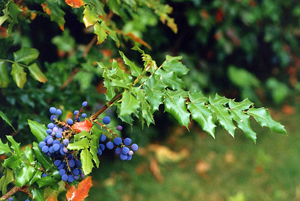 Another study found that both Chinese Mahonia (Mahonia fortunei) and milk thistle reduced the incidence of liver lesions, including vacuole formation, neutrophil infiltration, and the death of liver cells caused by carbon tetrachloride.30 Chao J, Lee MS, Amagaya S, Liao JW, et al. “Hepatoprotective effect of shidagonglao on acute liver injury induced by carbon tetrachloride.” Am J Chin Med. 2009;37(6):1085-97. http://www.ncbi.nlm.nih.gov/pubmed/19938218 Moreover, Mahonia increased the activities of the anti-oxidative enzymes superoxide dismutase, glutathione peroxidase, and glutathione reductase and decreased malondialdehyde levels in the liver (a marker of free radical stress), as compared to those in the untreated carbon tetrachloride group.
Another study found that both Chinese Mahonia (Mahonia fortunei) and milk thistle reduced the incidence of liver lesions, including vacuole formation, neutrophil infiltration, and the death of liver cells caused by carbon tetrachloride.30 Chao J, Lee MS, Amagaya S, Liao JW, et al. “Hepatoprotective effect of shidagonglao on acute liver injury induced by carbon tetrachloride.” Am J Chin Med. 2009;37(6):1085-97. http://www.ncbi.nlm.nih.gov/pubmed/19938218 Moreover, Mahonia increased the activities of the anti-oxidative enzymes superoxide dismutase, glutathione peroxidase, and glutathione reductase and decreased malondialdehyde levels in the liver (a marker of free radical stress), as compared to those in the untreated carbon tetrachloride group.
Studies on M. aquifolium in particular have focused primarily on its ability to decrease the resistance of bacteria to bactericides such as the berberine that is present in all species of Mohonia.31 Stermitz FR, Lorenz P, Tawara JN, Zenewicz LA, Lewis K. “Synergy in a medicinal plant: antimicrobial action of berberine potentiated by 5′-methoxyhydnocarpin, a multidrug pump inhibitor”. Proc. Natl. Acad. Sci. U.S.A. 97 (4): 1433–7. http://www.ncbi.nlm.nih.gov/pmc/articles/PMC26451
In the end, all species of Mahonia share the same key components so that studies are mostly transferable from one species to the next.
Artichoke Leaf
Artichoke leaf is used by herbalists to detoxify and protect the liver, stimulate the flow of bile, and lower cholesterol. In that regard, it is actually backed by a number of studies.
For example, in a double-blind, placebo-controlled study of 143 people with high cholesterol, artichoke leaf extract significantly improved cholesterol readings.32 Englisch W, Beckers C, Unkauf M, et al. “Efficacy of artichoke dry extract in patients with hyperlipoproteinemia.” Arzneimittelforschung. 2000;50:260-265. http://www.ncbi.nlm.nih.gov/pubmed/10758778 Total cholesterol fell by 18.5% as compared to 8.6% in the placebo group; LDL cholesterol by 23% vs. 6%; and LDL-to-HDL ratios by 20% vs. 7%. In a subsequent study of 75 otherwise healthy people with high cholesterol, artichoke leaf extract significantly reduced total cholesterol compared to a placebo.33 Bundy R, Walker AF, Middleton RW, et al. “Artichoke leaf extract (Cynara scolymus) reduces plasma cholesterol in otherwise healthy hypercholesterolemic adults: A randomized, double blind placebo controlled trial.” Phytomedicine. 2008 Apr 16. http://www.ncbi.nlm.nih.gov/pubmed/18424099 It appears the ability of artichoke leaf to lower cholesterol is tied to its ability to improve the flow of bile, which carries the excess cholesterol out as it passes through the intestinal tract.34 Qiang Z, Lee SO, Ye Z, Wu X, Hendrich S. “Artichoke extract lowered plasma cholesterol and increased fecal bile acids in Golden Syrian hamsters.” Phytother Res. 2012 Jul;26(7):1048-52. doi: 10.1002/ptr.3698. Epub 2011 Dec 20. http://www.ncbi.nlm.nih.gov/pubmed/22183827
Gentian Root
Gentian has been used by herbalists for over 2,000 years as an anti-toxic to stimulate liver function. It is used specifically to protect the liver, stimulate its function, help regenerate its cells, and increase the flow of bile.35 Jiang WX, Xue BY. “[Hepatoprotective effects of Gentiana scabra on the acute liver injuries in mice]. Zhongguo Zhong Yao Za Zhi. 2005 Jul;30(14):1105-7. http://www.ncbi.nlm.nih.gov/pubmed/16161450 ,36 Oztürk N, Herekman-Demir T, Oztürk Y, Bozan B, Baser KH. “Choleretic activity of Gentiana lutea ssp. symphyandra in rats.” Phytomedicine. 1998 Aug;5(4):283-8. doi: 10.1016/S0944-7113(98)80067-6. http://www.ncbi.nlm.nih.gov/pubmed/23195900 It is also known to inhibit the development of viruses that affect the liver.37 Tang ZM, Peng M, Zhan CJ. “[Screening 20 Chinese herbs often used for clearing heat and dissipating toxin with nude mice model of hepatitis C viral infection].” Zhongguo Zhong Xi Yi Jie He Za Zhi. 2003 Jun;23(6):447-8. http://www.ncbi.nlm.nih.gov/pubmed/12872400
Note: gentian is a “medicinal” herb and should not be used for longer than three weeks at a time as it will eventually over-stimulate the body. A rest of two weeks is enough before it can be used again.
Wormwood Herb
Wormwood (Artemisia absinthium) gets its name from its ability to destroy parasites. Forget studies to validate its efficacy. Just know that the most effective drug against Plasmodium falciparum, the parasite that causes malaria, is called artemisinin. Artemisinin is derived from wormwood.38 Kara Rogers. “artemisinin” Encyclopaedia Britannica. (Accessed 6 May 2013.) http://www.britannica.com/EBchecked/topic/1126694/artemisinin Unfortunately, as with most pharmaceutical anti-pathogens that extract a single bio-active molecule from a plant, it makes it that much easier for the pathogens to mutate “around” the drug. Although parasites are more genetically complex than viruses or bacteria, the principle is the same; it just takes a bit longer. And this now appears to be the case with P. falciparum and artemisinin.39 “Update on artemisinin resistance.” April 2012. World Health Organization. (Accessed 6 May 2013.) http://www.who.int/malaria/publications/atoz/arupdate042012.pdf
Garlic Bulb
Garlic has long been touted for its ability to kill intestinal parasites. As Dr. Richard Schulze was fond of saying to me, “If you eat enough garlic, no self-respecting parasite will hang around.” Most studies have focused on garlic’s ability to kill parasites in Petri dishes and lab rats,40 Ibrahim AN. “Comparison of in vitro activity of metronidazole and garlic-based product (Tomex®) on Trichomonas vaginalis.” Parasitol Res. 2013 May;112(5):2063-7. http://www.ncbi.nlm.nih.gov/pubmed/23455944 ,41 Mantawy MM, Ali HF, Rizk MZ. “Therapeutic effects of Allium sativum and Allium cepa in Schistosoma mansoni experimental infection.” Rev Inst Med Trop Sao Paulo. 2011 May-Jun;53(3):155-63. http://www.scielo.br/scielo.php?script=sci_arttext&pid=S0036-46652011000300007&lng=en&nrm=iso&tlng=en so there are virtually no human studies. On the other hand, farmers, driven by immediate financial need, have been testing and proving the ability of garlic to kill parasites for hundreds of years.42 Jean Noon. ” Controlling Sheep Parasites with Garlic Juice.” 2004. MOFGA. (Accessed 6 may 2013.) http://www.mofga.org/mofga/other/mofgd04d.html
Conclusion
As I mentioned at the top of the newsletter, although the Liver Flush Tea and the Liver Flush Tincture are companion formulas, and are both used as part of a liver detox protocol, they are not the same thing. They play fundamentally different roles in the body and are used in very different ways. Whereas the liver tea is primarily a cleansing and “easing” formula that can be used on an ongoing therapeutic basis, the liver flush tincture formula is more of a medicinal rebuilding and anti-parasitic formula designed to be used on an as needed basis. For most people, one bottle used as part of a semiannual liver detox is all that’s required. For special situations, you can use up to three bottles back to back to back. But then take at least two weeks off before using again. It can also be used as part of an ongoing maintenance program in which you consume one bottle a month for as long as desired. Again, the liver tincture as described above is “medicinal” in nature and is one of the most powerful formulas I work with. As such, it requires breaks in use so as not to exhaust the body. For information on the liver detox protocol and how to detox go to our liver detox instructions page.
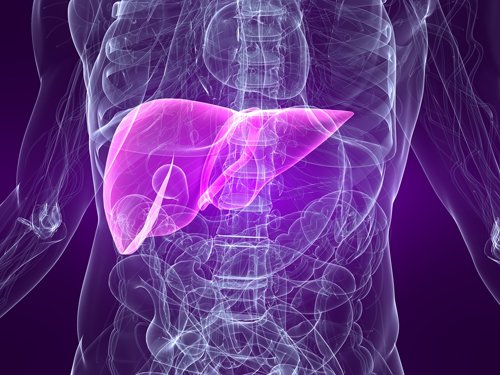
References
| ↑1 | Laekeman G, De Coster S, De Meyer K. “St. Mary’s Thistle: an overview.” J Pharm Belg. 2003;58(1):28-31. http://www.ncbi.nlm.nih.gov/pubmed/12722542 |
|---|---|
| ↑2 | McClure J, Lovelace ES, Elahi S, Maurice NJ, et al. “Silibinin inhibits HIV-1 infection by reducing cellular activation and proliferation.”PLoS One. 2012;7(7):e41832. http://www.ncbi.nlm.nih.gov/pmc/articles/PMC3404953/ |
| ↑3 | Huseini HF, Larijani B, Heshmat R, Fakhrzadeh H, et al. “The efficacy of Silybum marianum (L.) Gaertn. (silymarin) in the treatment of type II diabetes: a randomized, double-blind, placebo-controlled, clinical trial.” Phytother Res. 2006 Dec;20(12):1036-9. http://www.ncbi.nlm.nih.gov/pubmed/17072885 |
| ↑4 | Simons JM, Hart BA, Ip Vai Ching TR, Van Dijk H, Labadie RP. “Metabolic activation of natural phenols into selective oxidative burst agonists by activated human neutrophils.” Free Radic Biol Med 1990;8:251-258. http://www.ncbi.nlm.nih.gov/pubmed/2160411 |
| ↑5 | Stuppner H, Wagner H. “New cucurbitacin glycosides from Picrorhiza kurroa.” Planta Medica 1989;55:559. http://www.ncbi.nlm.nih.gov/pubmed/2616673 |
| ↑6 | Visen PK, Saraswat B, Dhawan BN. “Curative effect of picroliv on primary cultured rat hepatocytes against different hepatotoxins: an in vitro study.” J Pharmacol Toxicol Methods 1998;40:173-179. http://www.ncbi.nlm.nih.gov/pubmed/10334634 |
| ↑7 | Rastogi R, Srivastava AK, Rastogi AK. “Biochemical changes induced in liver and serum aflatoxin B1-treated male wistar rats: preventive effect of picroliv.” Pharmacol Toxicol 2001;88:53-58. http://www.ncbi.nlm.nih.gov/pubmed/11169162 |
| ↑8 | Singh AK, Mani H, Seth P. “Picroliv preconditioning protects the rat liver against ischemia-reperfusion injury.” Eur J Pharmacol 2000;395:229-239. http://www.ncbi.nlm.nih.gov/pubmed/10812054 |
| ↑9 | Dwivedi Y, Rastogi R, Garg NK, et al. “Effects of picroliv, the active principle of Picrorhiza kurroa, on biochemical changes in rat liver poisoned by Amanita phalloides.” Zhongguo Yao Li Xue Bao 1992;13:197-200. http://www.chinaphar.com/1671-4083/13/197.pdf |
| ↑10 | Singh V, Kapoor NK, Dhawan BN. “Effect of picroliv on protein and nucleic acid synthesis.” Indian J Exp Biol 1992;30:68-69. http://www.ncbi.nlm.nih.gov/pubmed/1506022 |
| ↑11 | Saraswat B, Visen PK, Patnaik GK, Dhawan BN. “Ex vivo and in vivo investigations of picroliv from Picrorhiza kurroa in an alcohol intoxication model in rats.” J Ethnopharmacol 1999;66:263-269. http://www.ncbi.nlm.nih.gov/pubmed/10473171 |
| ↑12 | Mehrotra R, Rawat S, Kulshreshtha DK, et al. “In vitro studies on the effect of certain natural products against hepatitis B virus.” Indian J Med Res 1990;92:133-138. http://www.ncbi.nlm.nih.gov/pubmed/2370093 |
| ↑13 | Vaidya AB, Antarkar DS, Doshi JC, et al. “Picrorhiza kurroa (Kutaki) Royle ex Benth as a hepatoprotective agent–experimental and clinical studies.” J Postgrad Med 1996;42:105-108. http://www.jpgmonline.com/article.asp?issn=0022-3859;year=1996;volume=42;issue=4;spage=105;epage=8;aulast=Vaidya |
| ↑14 | Rajkumar V, Guha G, Kumar RA. “Antioxidant and anti-neoplastic activities of Picrorhiza kurroa extracts.” Food Chem Toxicol. 2011 Feb;49(2):363-9. http://www.ncbi.nlm.nih.gov/pubmed/21081148 |
| ↑15 | Rajeshkumar NV, Kuttan R. “Inhibition of N-nitrosodiethylamine-induced hepatocarcinogenesis by Picroliv.” J Exp Clin Cancer Res. 2000 Dec;19(4):459-65. http://www.ncbi.nlm.nih.gov/pubmed/11277323 |
| ↑16 | Rajeshkumar NV, Kuttan R. “Protective effect of Picroliv, the active constituent of Picrorhiza kurroa, against chemical carcinogenesis in mice.” Teratog Carcinog Mutagen. 2001;21(4):303-13. http://www.ncbi.nlm.nih.gov/pubmed/11406836 |
| ↑17 | Fischer TC, Gosch C, Mirbeth B, Gselmann M, Thallmair V, Stich K. “Potent and specific bactericidal effect of juglone (5-hydroxy-1,4-naphthoquinone) on the fire blight pathogen Erwinia amylovora.” J Agric Food Chem. 2012 Dec 12;60(49):12074-81. http://www.ncbi.nlm.nih.gov/pubmed/23163769 |
| ↑18 | Min BS, Miyashiro H, Hattori M. “Inhibitory effects of quinones on RNase H activity associated with HIV-1 reverse transcriptase.” Phytother Res. 2002 Mar;16 Suppl 1:S57-62. http://www.ncbi.nlm.nih.gov/pubmed/11933141 |
| ↑19 | Anulewicz AC, McCullough DG, Cappaert DL, Poland TM. “Host range of the emerald ash borer (Agrilus planipennis Fairmaire) (Coleoptera: Buprestidae) in North America: results of multiple-choice field experiments.” Environ Entomol. 2008 Feb;37(1):230-41. http://www.ncbi.nlm.nih.gov/pubmed/18348815 |
| ↑20 | John Christopher. “Black Walnut Tincture.” Dr. Christopher’s Herbal Legacy. (Accessed 5 May 2013.) http://www.herballegacy.com/Black_Walnut.html |
| ↑21 | Atta AH, Elkoly TA, Mouneir SM, Kamel G, et al. “Hepatoprotective Effect of Methanol Extracts of Zingiber officinale and Cichorium intybus.” Indian J Pharm Sci. 2010 Sep-Oct; 72(5): 564–570. http://www.ncbi.nlm.nih.gov/pmc/articles/PMC3116299/ |
| ↑22 | Hassan HA, Yousef MI. Ameliorating effect of chicory (Cichorium intybus L.)-supplemented diet against nitrosamine precursors-induced liver injury and oxidative stress in male rats.” Food Chem Toxicol. 2010 Aug-Sep;48(8-9):2163-9. http://www.ncbi.nlm.nih.gov/pubmed/20478349 |
| ↑23 | Kim M, Shin HK. “The water-soluble extract of chicory influences serum and liver lipid concentrations, cecal short-chain fatty acid concentrations and fecal lipid excretion in rats.” J Nutr. 1998 Oct;128(10):1731-6. http://jn.nutrition.org/content/128/10/1731.long |
| ↑24 | Schmidt BM, Ilic N, Poulev A, Raskin I. “Toxicological evaluation of a chicory root extract.” Food Chem Toxicol. 2007 Jul;45(7):1131-9. http://www.ncbi.nlm.nih.gov/pubmed/17306431 |
| ↑25 | Mahesh A, Jeyachandran R, Cindrella L, Thangadurai D, et al. “Hepatocurative potential of sesquiterpene lactones of Taraxacum officinale on carbon tetrachloride induced liver toxicity in mice.” Acta Biol Hung. 2010 Jun;61(2):175-90. doi: 10.1556/ABiol.61.2010.2.6. http://www.ncbi.nlm.nih.gov/pubmed/20519172 |
| ↑26 | Domitrovic R, Jakovac H, Romic Z, Rahelic D, Tadic Z. “Antifibrotic activity of Taraxacum officinale root in carbon tetrachloride-induced liver damage in mice.” J Ethnopharmacol. 2010 Aug 9;130(3):569-77. http://www.ncbi.nlm.nih.gov/pubmed/20561925 |
| ↑27 | Atta AH, Elkoly TA, Mouneir SM, Kamel G, et al. |
| ↑28 | Leake I. “Nausea and vomiting: Getting to the root of the antiemetic effects of ginger. “Nat Rev Gastroenterol Hepatol. 2013 Mar 26. http://www.ncbi.nlm.nih.gov/pubmed/23528344 |
| ↑29 | Chao J, Liao JW, Peng WH, Lee MS, et al. “Antioxidant, Analgesic, Anti-Inflammatory, and Hepatoprotective Effects of the Ethanol Extract of Mahonia oiwakensis Stem.” Int J Mol Sci. 2013 Jan 30;14(2):2928-45. http://www.ncbi.nlm.nih.gov/pmc/articles/PMC3588023 |
| ↑30 | Chao J, Lee MS, Amagaya S, Liao JW, et al. “Hepatoprotective effect of shidagonglao on acute liver injury induced by carbon tetrachloride.” Am J Chin Med. 2009;37(6):1085-97. http://www.ncbi.nlm.nih.gov/pubmed/19938218 |
| ↑31 | Stermitz FR, Lorenz P, Tawara JN, Zenewicz LA, Lewis K. “Synergy in a medicinal plant: antimicrobial action of berberine potentiated by 5′-methoxyhydnocarpin, a multidrug pump inhibitor”. Proc. Natl. Acad. Sci. U.S.A. 97 (4): 1433–7. http://www.ncbi.nlm.nih.gov/pmc/articles/PMC26451 |
| ↑32 | Englisch W, Beckers C, Unkauf M, et al. “Efficacy of artichoke dry extract in patients with hyperlipoproteinemia.” Arzneimittelforschung. 2000;50:260-265. http://www.ncbi.nlm.nih.gov/pubmed/10758778 |
| ↑33 | Bundy R, Walker AF, Middleton RW, et al. “Artichoke leaf extract (Cynara scolymus) reduces plasma cholesterol in otherwise healthy hypercholesterolemic adults: A randomized, double blind placebo controlled trial.” Phytomedicine. 2008 Apr 16. http://www.ncbi.nlm.nih.gov/pubmed/18424099 |
| ↑34 | Qiang Z, Lee SO, Ye Z, Wu X, Hendrich S. “Artichoke extract lowered plasma cholesterol and increased fecal bile acids in Golden Syrian hamsters.” Phytother Res. 2012 Jul;26(7):1048-52. doi: 10.1002/ptr.3698. Epub 2011 Dec 20. http://www.ncbi.nlm.nih.gov/pubmed/22183827 |
| ↑35 | Jiang WX, Xue BY. “[Hepatoprotective effects of Gentiana scabra on the acute liver injuries in mice]. Zhongguo Zhong Yao Za Zhi. 2005 Jul;30(14):1105-7. http://www.ncbi.nlm.nih.gov/pubmed/16161450 |
| ↑36 | Oztürk N, Herekman-Demir T, Oztürk Y, Bozan B, Baser KH. “Choleretic activity of Gentiana lutea ssp. symphyandra in rats.” Phytomedicine. 1998 Aug;5(4):283-8. doi: 10.1016/S0944-7113(98)80067-6. http://www.ncbi.nlm.nih.gov/pubmed/23195900 |
| ↑37 | Tang ZM, Peng M, Zhan CJ. “[Screening 20 Chinese herbs often used for clearing heat and dissipating toxin with nude mice model of hepatitis C viral infection].” Zhongguo Zhong Xi Yi Jie He Za Zhi. 2003 Jun;23(6):447-8. http://www.ncbi.nlm.nih.gov/pubmed/12872400 |
| ↑38 | Kara Rogers. “artemisinin” Encyclopaedia Britannica. (Accessed 6 May 2013.) http://www.britannica.com/EBchecked/topic/1126694/artemisinin |
| ↑39 | “Update on artemisinin resistance.” April 2012. World Health Organization. (Accessed 6 May 2013.) http://www.who.int/malaria/publications/atoz/arupdate042012.pdf |
| ↑40 | Ibrahim AN. “Comparison of in vitro activity of metronidazole and garlic-based product (Tomex®) on Trichomonas vaginalis.” Parasitol Res. 2013 May;112(5):2063-7. http://www.ncbi.nlm.nih.gov/pubmed/23455944 |
| ↑41 | Mantawy MM, Ali HF, Rizk MZ. “Therapeutic effects of Allium sativum and Allium cepa in Schistosoma mansoni experimental infection.” Rev Inst Med Trop Sao Paulo. 2011 May-Jun;53(3):155-63. http://www.scielo.br/scielo.php?script=sci_arttext&pid=S0036-46652011000300007&lng=en&nrm=iso&tlng=en |
| ↑42 | Jean Noon. ” Controlling Sheep Parasites with Garlic Juice.” 2004. MOFGA. (Accessed 6 may 2013.) http://www.mofga.org/mofga/other/mofgd04d.html |


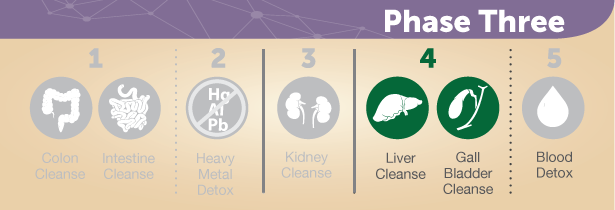
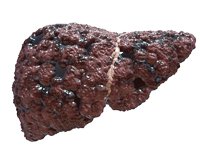
 As a 2003 report in the Journal de Pharmacie de Belgique pointed out, the liver benefitting properties of milk thistle are rather difficult to evaluate objectively.
As a 2003 report in the Journal de Pharmacie de Belgique pointed out, the liver benefitting properties of milk thistle are rather difficult to evaluate objectively. The root contains a number of very bitter glucosides including kutkin, the primary active ingredient. Kutkin itself is comprised of kutkoside and iridoid glycoside picroside I, II and II. Other identified active components include picrorhizin, nine cucurbitacin glycosides, D-mannitol, benetic acid, kutkisterol, vanillic acid, steroids, and apocynin. Apocynin is a catechol that has been shown to inhibit neutrophil oxidative burst (good for the overall integrity of the immune system) in addition to being a powerful anti-inflammatory agent and reducer of platelet aggregation,
The root contains a number of very bitter glucosides including kutkin, the primary active ingredient. Kutkin itself is comprised of kutkoside and iridoid glycoside picroside I, II and II. Other identified active components include picrorhizin, nine cucurbitacin glycosides, D-mannitol, benetic acid, kutkisterol, vanillic acid, steroids, and apocynin. Apocynin is a catechol that has been shown to inhibit neutrophil oxidative burst (good for the overall integrity of the immune system) in addition to being a powerful anti-inflammatory agent and reducer of platelet aggregation, A 2012 study screened plant quinones for inhibiting effects on the bacterial fire blight pathogen. The most active compound discovered was juglone from walnuts.
A 2012 study screened plant quinones for inhibiting effects on the bacterial fire blight pathogen. The most active compound discovered was juglone from walnuts. Another study found that both Chinese Mahonia (Mahonia fortunei) and milk thistle reduced the incidence of liver lesions, including vacuole formation, neutrophil infiltration, and the death of liver cells caused by carbon tetrachloride.
Another study found that both Chinese Mahonia (Mahonia fortunei) and milk thistle reduced the incidence of liver lesions, including vacuole formation, neutrophil infiltration, and the death of liver cells caused by carbon tetrachloride.


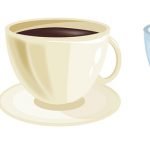
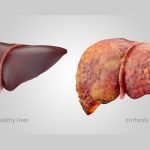

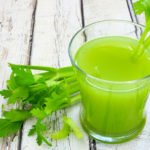




I love Dr Barron’s well
I love Dr Barron’s well-researched articles – very informative and educational and up to date.
Very nice information thanks
Very nice information thanks a lot..
I have an 11 year old boy on
I have an 11 year old boy on the spectrum who is having issues with a “fatty liver”- he has a yeast over growth we are trying to control- would kutkin be safe for his age? We have him on a sf-cf diet right now- taking a probiotic and enzyme with each meal.
There are no known issues
There are no known issues regarding kutkin and children, but you would definitely want to work with your son’s pediatrician in regard to giving him any herbs for treating medical conditions.
What would be the protocol
What would be the protocol for someone with Primary Liver Cancer Stage III B, Cirrhosis & Hep C? I understand that cirrhotic livers can not regenerate or be repaired. Liver cancer is not curable according to my husband’s oncologist. Though his liver function is still good, he was told that his chances of survival up to 3 years is less than 5%. The cancer would be monitored & managed by radiation and/or drugs but ultimately the liver would fail & metastasize to other areas. He is 67 yrs young & otherwise in excellent health. Thank you in advance for taking the time to respond.
Dear Dr. Baron,
Dear Dr. Baron,
Is there any help or cure, or have you helped anyone to get rid of Blastocystis Hominis (a parasite). I have taken two series of medication from my doctor (metronidazole, Flagyl) but it did not help.
I woud greatly appreciate your suggestion.
Thank you
Have you considered doing a
Have you considered doing a full body detox which contains multiple anti parasite elements?
http://www.ncbi.nlm.nih.gov/pubmed/21431384
http://www.ehow.com/about_5583330_blastocystis-hominis-herbal-treatment.html
Or even just taking something like Jon Barron’s antipathogenic formula.
I am a 60 y/o female and I
I am a 60 y/o female and I have been diagnosed with Hepatitis C. I and am about to start taking medication for this and was told that the only way that I can cure this is through medication. I don’t believe that medication is the only way to cure Hep C and would like to know what my alternatives are.
I have my physicals every year and only found out about this last year at the age of 59. I have never used drugs and I’ve been married for 32 years and my husband does not have it.
I would do a search on our
I would do a search on our site for Hepatitis C and you can see the various articles on the topic.
I need the same in India. How
I need the same in India. How can I procure. Is there an alternate medicine for the tincture?